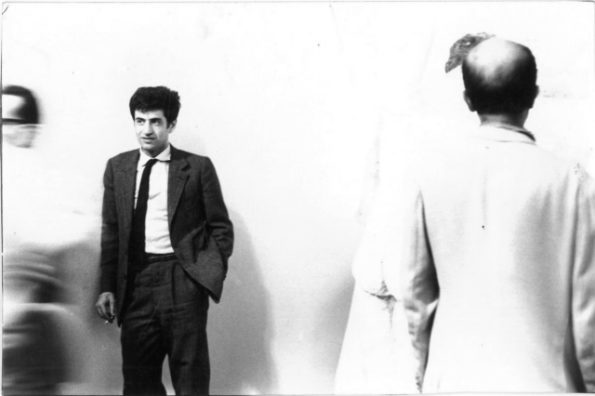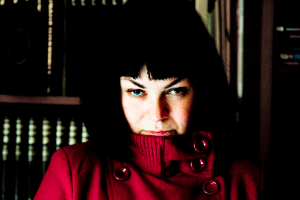Search
To search for an exact match, type the word or phrase you want in quotation marks.
A*DESK has been offering since 2002 contents about criticism and contemporary art. A*DESK has become consolidated thanks to all those who have believed in the project, all those who have followed us, debating, participating and collaborating. Many people have collaborated with A*DESK, and continue to do so. Their efforts, knowledge and belief in the project are what make it grow internationally. At A*DESK we have also generated work for over one hundred professionals in culture, from small collaborations with reviews and classes, to more prolonged and intense collaborations.
At A*DESK we believe in the need for free and universal access to culture and knowledge. We want to carry on being independent, remaining open to more ideas and opinions. If you believe in A*DESK, we need your backing to be able to continue. You can now participate in the project by supporting it. You can choose how much you want to contribute to the project.
You can decide how much you want to bring to the project.

I’ve visited the Oscar Masotta. Theory As Action exhibition a number of times, with the sole intention of discovering which of Masotta’s multiple characteristics I wanted to highlight in this text. Did I want to speak of Masotta as the introducer of Lacan in Argentina and Spain? As the author of several books on psychoanalysis and art? As co-founder of the Freudian School in Buenos Aires? As a political activist? As a Happening artist? As a theoretician? As a supporter of cartoons as an art form? As founder of the Freudian Library in Barcelona? As someone capable of foreseeing the future of art? As someone indefatigable who has been a member of countless art and activist groups? It is extremely difficult – if not impossible – to highlight just a few traits. Would I prefer to focus on his insatiable desire to read everything that fell into his hands? His dishevelled dandyism? His love of film? His ability to captivate audiences with his discourses, even in spite of his loathing of speaking in public?
Very often, when I have a chance to visit exhibitions dedicated to just one person (usually artists, though not always) I get the impression that they are actually placing the person on a dissecting table, surrounded by an audience anxious for the dissection to begin and expecting the interior of the body to reveal what the exterior strove to conceal. Even though we know that we’ll never be able to recuperate the person in their totality, we are continuously approaching his life and work more or less successfully, more or less respectfully, more or less exhaustively, more or less informatively. We know that seemingly trivial aspects actually hide many layers of meaning, making people what they are.
Masotta sometimes wore his tie crookedly on purpose. When he shared an apartment with Reneé Cuéllar he kept a lizard as a pet. For a long time he wanted to be a writer of fiction. After the overthrow of Perón, he would distribute picture cards of Perón and Evita at the meeting places of anti-Peronist intellectuals. He collected books compulsively (many of which weren’t even his): he read them, reread them, underlined them and filled them with notes, leaving his mark on their pages. He came to terms with a kind of Marxism that defined Happenings as a frivolous activity and defended the relevance of intellectual thought and artistic activity in left-wing political activism. Considered one of the main representatives of the kind of institutional dissociation that remains on the fringes, Masotta became a key part of the university institution without needing to complete a degree in Philosophy.
After having visited this exhibition several times, I still don’t know what aspects of the life and work of Masotta that should be highlighted. However, thanks to him and his oeuvre I’ve been thinking again of McLuhan’s texts and of the role of the mass media in society (what would Masotta have thought today of the Cambridge Analytica scandal?), of the possibility of thinking being a subversive act (especially in times as politically tumultuous as those that occupy us), of the role of the public in art, of the reinterpretation of Happenings in different contexts and ages, and also of the beautiful definition by Eduardo Costa that compared them to the animals that survive after having been cut up in pieces. This simile leads me to think that perhaps for this very reason, Happenings may end up developing a greater resistance to the passage of time than other forms of artistic expressions. Perhaps because Happenings are neither created nor destroyed, only transformed. All the time. In spite of everything.

It’s hard for Marla Jacarilla to define herself, though she’s been obstinately trying to, since a few years ago they told her it would be good for her to have an artist’s statement. She makes art (or at least tries to) she writes about film and every now and again reflects on things that usually pass unnoticed. Somehow or other this all comes down to one thing: an obsession for the letters that form words, that then form sentences, that form paragraphs, that form chapters that tell us stories.
"A desk is a dangerous place from which to watch the world" (John Le Carré)